Last updated: July 27, 2023
Article
Invasion of Kiska
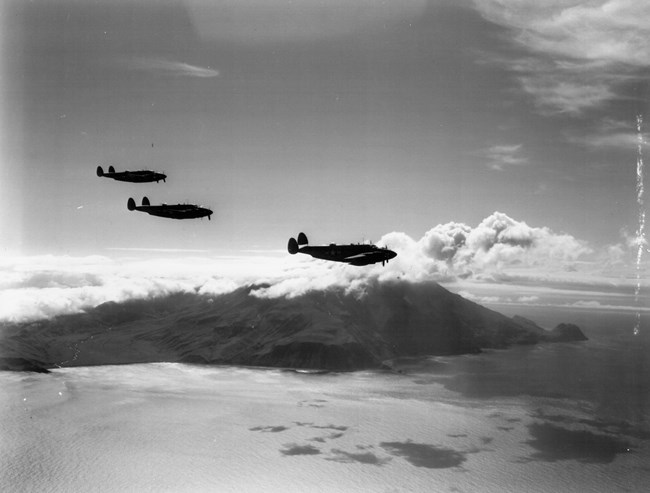
National Archives
This is a short pictorial summary of the World War II events that occurred on Kiska. For a more detailed account, explore The Silent Sentinels article.
On June 7, 1942, the Japanese invaded the Aleutian island of Kiska.
"Push the enemy into the sea. Get Kiska back." Instruction to the 11th Army Air Force and Navy Patrol Wing 4
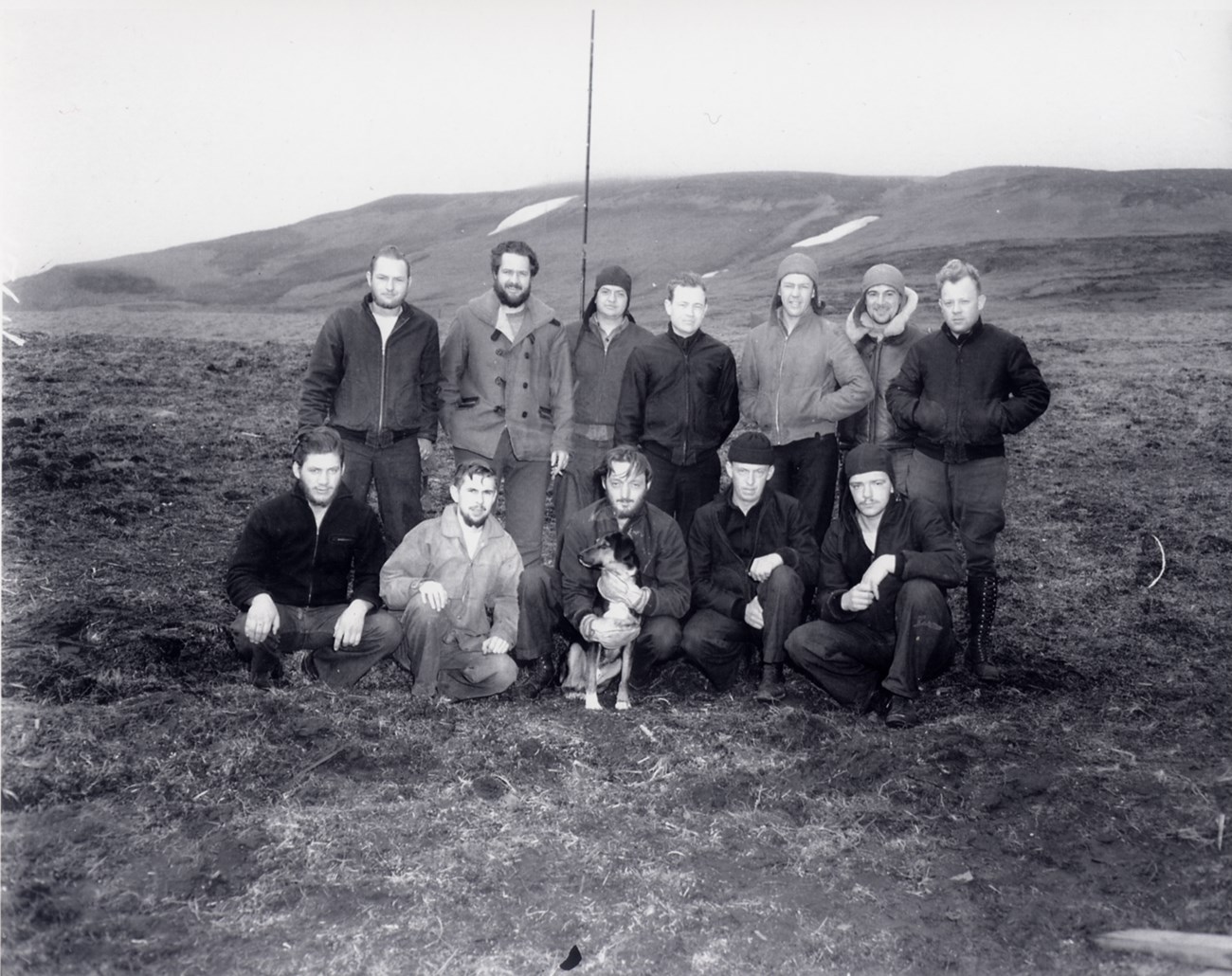
Courtesy Ralph Carrigan, brother of Paul E. Carrigan, Aerographer’s Mate 2nd Class, US Navy, Circa 1942-1943.
Kiska,1942
The island’s sole inhabitants of the island were the crew of the U.S. Aerological Detail who fled to the hills when the Japanese attacked on June 6; most were captured after a few days. Senior Petty Officer William C. House managed to remain at large for 50 days eating only plants and earthworms until, weighing a mere 80 pounds, he was forced to choose between capture and starvation and surrendered to the Japanese.
“We can’t understand... why we continue to send our (air)men out into this God awful stuff against a target which can’t be seen...” 11th Air Force Squadron Commander
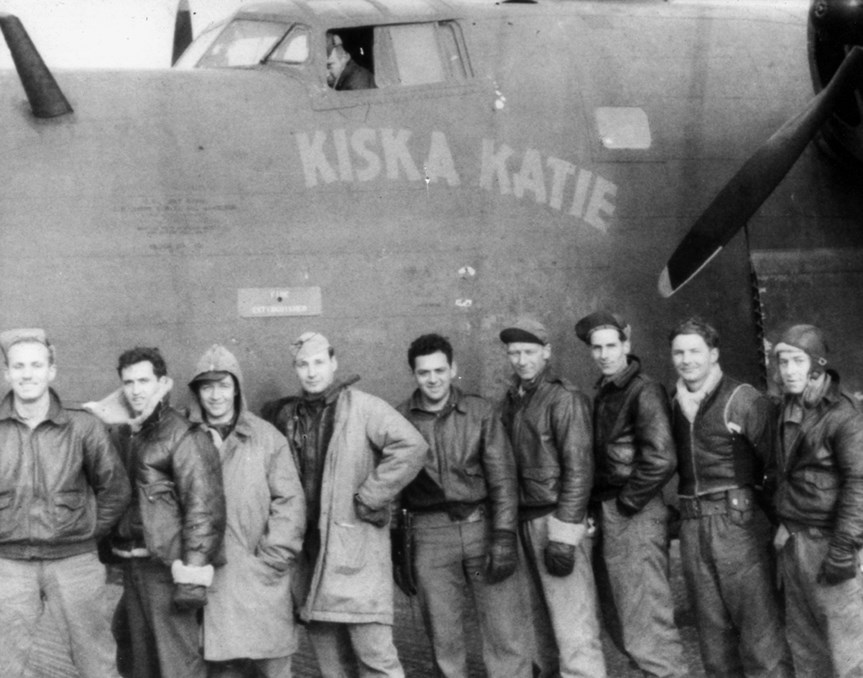
U.S. National Archives
Kiska, 1943
In the following year, the 11th Army Air Force and Navy Patrol Wing 4 dropped seven million pounds of bombs on the Japanese on Kiska. The pilots, many of whom were fresh out of flight school, had to contend with both Japanese anti-aircraft fire and the unpredictable Aleutian weather. Fog, hurricane -force winds, and freezing temperatures were responsible for scores of deaths. The relentless bombing, coordinated with an Allied blockade, strangled the Japanese supply line to Kiska and Attu and prepared the way for an Allied (American and Canadian) invasion in August, 1943.
“We... threw our rifles and bayonets into the water and then went away. They never saw us.” Karl Kasukabe, Japanese veteran of Kiska
July
On July 29, 1943, the Japanese forces on Kiska executed a daring escape plan. They wired “Kiska City” with demolition charges and destroyed supplies, ammunition, and buildings. During the night, the US battleships that circled Kiska were diverted by radar blips that they mistakenly interpreted as a Japanese evacuation fleet. In their absence, the real evacuation fleet of eight warships steamed into Kiska Harbor. In 55 minutes the entire Japanese force of over 5,000 men boarded the vessels and drifted off silently under the cover of darkness.
“The island appears desolate and unoccupied.” Billy Wheeler, 36th Squadron, August, 1943
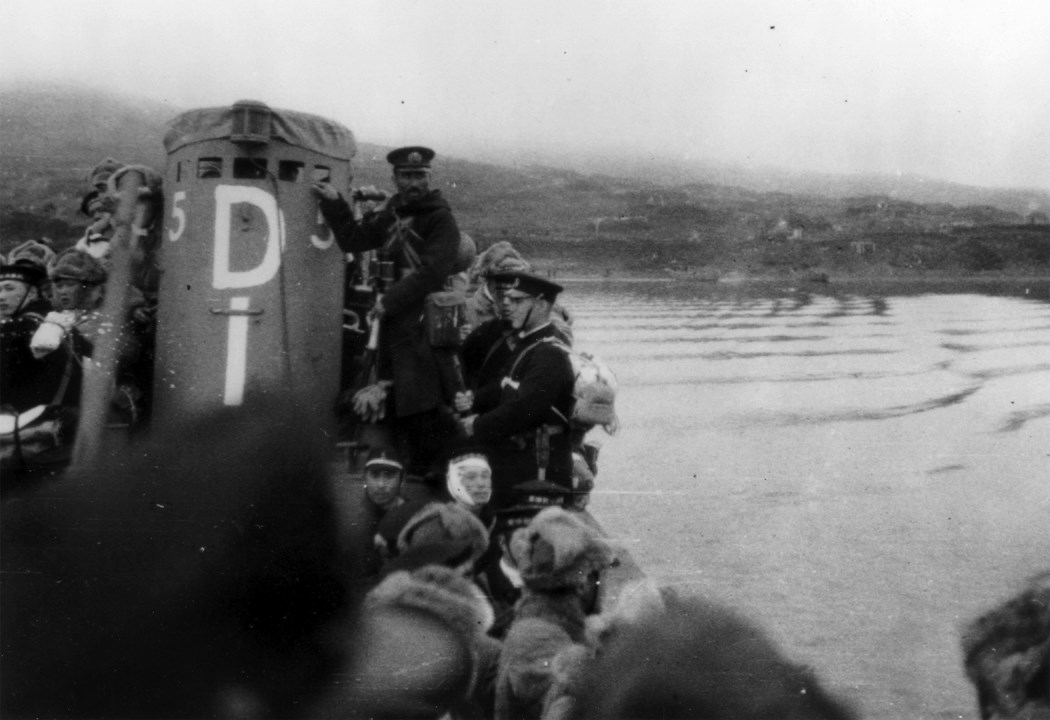
National Archives
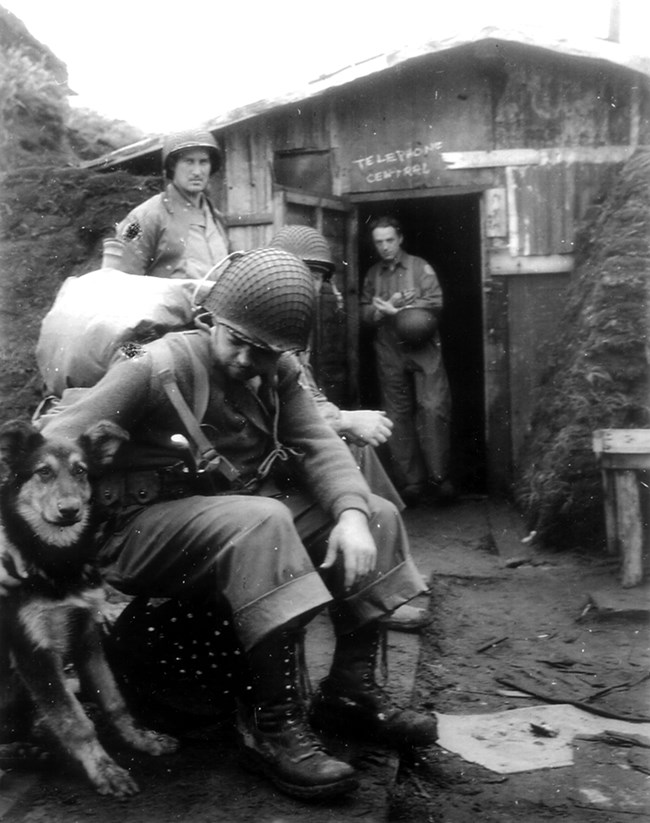
US National Archives
August
Nearly 35,000 Allied troops landed on Kiska on August 15, 1943. The original plan was to invade Kiska in the spring, before Attu, but the invasion was postponed to allow the Allies time to gather the resources they needed for a major attack. Allied troops expected to meet a Japanese force several times the size of the one on Attu, and they were prepared for heavy casualties. The men were greeted instead by half a dozen dogs, among them “Explosion,” who originally belonged to the captured Kiska Aerological Detail, and who the Japanese had cared for during the occupation.
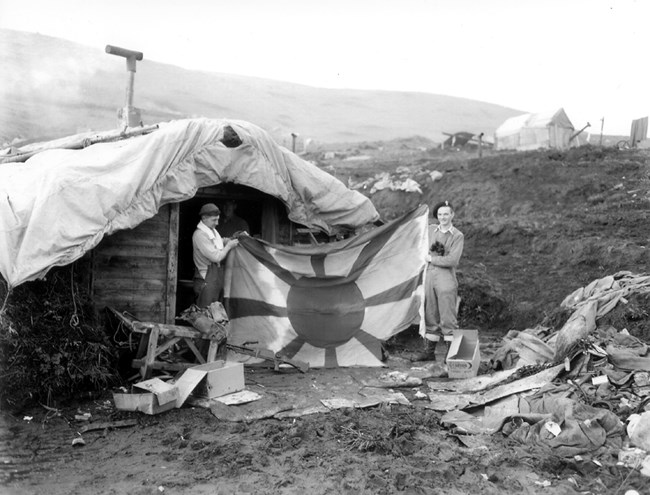
National Archives
Allied commanders refused to believe that the Japanese could have completely evacuated Kiska. For eight days, troops searched the island, firing into the dense fog and sometimes accidentally shooting their comrades. 24 Allied soldiers were killed by friendly fire, four by Japanese booby traps, and a further 71 died when the ship Abner Read struck a floating mine. 168 Allied soldiers were wounded or fell ill on Kiska. The bombardment and invasion of the deserted island was written off as a “training exercise,” and the Aleutian Campaign officially ended after 439 days of warfare.
Learn more about the Underwater Battlefield that remains in this article from NOAA.
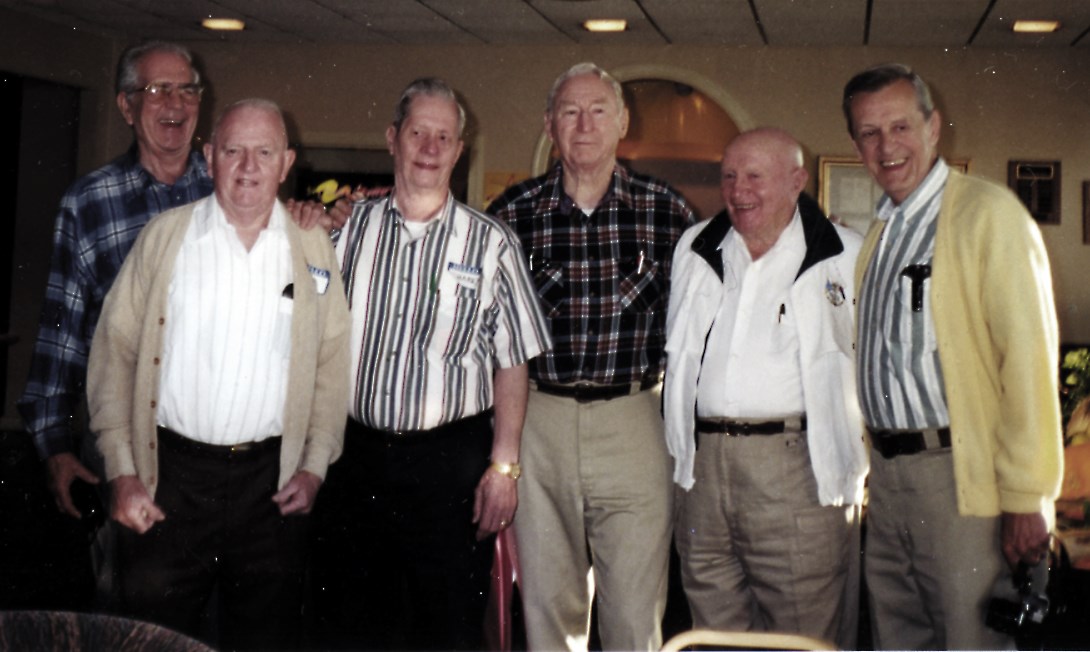
Courtesy of Roger Jeanfaivre
